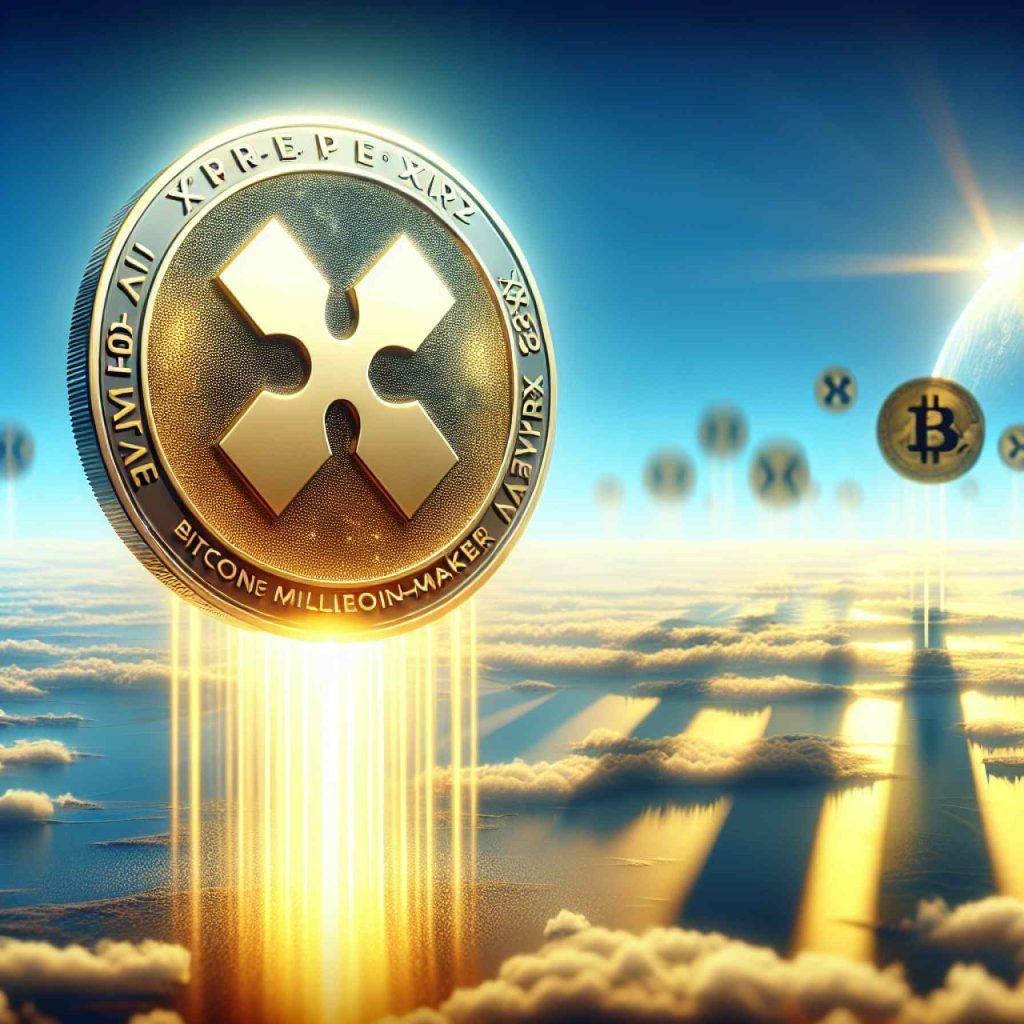
- Bitcoin recently surpassed the $100,000 mark, highlighting its sustained appeal and revolutionary impact since its inception 16 years ago.
- XRP has gained significant attention, rising over 300% with its potential to transform the banking sector through swift and cost-effective international transactions.
- XRP’s market capitalization has reached $135 billion, sparking debates on its valuation compared to its larger transaction-processing competitors like Visa.
- The digital currency market’s inherent volatility prompts calls for careful valuation analysis and diversification strategies for investors.
- XRP’s future success may depend on its ability to maintain low transaction costs while expanding its financial ecosystem adoption.
- The unfolding narrative of XRP serves as a reminder of the challenges and potential in balancing innovation and investment wisdom.
A digital whirlwind has swept the financial world, capturing imaginations and fortunes alike. In the eye of this storm lies Bitcoin, the trailblazing cryptocurrency that recently breached the $100,000 threshold—an unprecedented milestone mere 16 years post-birth. Though its price has dipped slightly, the bullish spirit of Bitcoin’s devotees shows no signs of waning.
Echoing this fervor is XRP, an altcoin that has emerged from the shadows, capturing both attention and investment. Propelled by its promise to disrupt the banking sector, XRP has seen a meteoric rise of over 300% in the recent months. But can it, too, weave the rags-to-riches dreams that Bitcoin has spun?
At the heart of XRP’s allure lies its potential utility: a digital bridge facilitating swift international money transfers and frugal transaction costs. This token’s distinct edge over legacy financial systems lies in its speed and cost-efficiency—attributes that hold tantalizing appeal for a banking sector mired in costly delays.
Yet, as investment in XRP mounts, a prudent pondering of its true worth becomes inevitable. With a market capitalization cresting $135 billion, XRP’s valuation demands closer scrutiny. Consider Visa, a global payments giant facilitating 640 million transactions a day compared to XRP’s modest million. Despite this disparity, Visa’s market cap outstrips XRP’s by only a factor of five, raising questions about valuation proportionality. Is XRP punching above its weight, or is there a hidden gem within its code that the markets are yet to unearth?
Even if XRP garners broader adoption in the financial ecosystem, it hinges crucially on its razor-thin transaction costs—a double-edged sword that tantalizes banks yet caps revenue potential. This paradox poses a critical question: does an expanded market share guarantee commensurate valuations, or is this a speculative bubble built on aspirations and abstractions?
The surging interest in XRP is undeniable, yet therein lies the cautionary tale. The digital currency market often ebbs and flows with volatility that mocks traditional financial principles, instilling skepticism in any forecast of XRP evolving into a ‘millionaire-maker’. For cautious investors, diversification remains the mantra—a safeguard against the wild swings and whims of market sentiment.
As we stand at the digital crossroads of potential and peril, the saga of XRP is a compelling reminder of the balancing act between innovation and investment acumen. Whether this altcoin can chart a path to prosperity akin to Bitcoin remains the tantalizing question.
Bitcoin Hits New Highs: Ripple’s XRP at the Crossroads of Innovation and Investment
Understanding Bitcoin’s Impact and Future
Bitcoin’s Market Milestones
– Bitcoin’s recent peak over the $100,000 mark is a significant market milestone. This increase is attributed to broader acceptance, increased institutional investment, and growing public awareness.
– As of late 2023, Bitcoin’s market cap surpasses $1.8 trillion, making it a dominant force in the cryptocurrency market by a large margin.
Future of Bitcoin: Insights & Predictions
– Bitcoin is often likened to “digital gold” because of its finite supply of 21 million coins, a quality that drives its value.
– Experts predict continued growth for Bitcoin due to increasing demand as a store of value, mainstream financial adoption, and technological improvements in scalability and transaction speed.
– Emerging markets are expected to play a significant role in Bitcoin’s adoption, contributing to its global value and use case expansion.
XRP’s Unique Role in the Cryptocurrency Ecosystem
XRP’s Market Potential and Challenges
– XRP aims to revolutionize the banking sector by offering rapid and cost-effective international money transfers compared to traditional SWIFT methods, which helps financial institutions save money.
– Despite a recent surge of over 300%, opinions on XRP remain divided. Critics point to legal challenges faced by Ripple Labs, including ongoing SEC litigation that influences market perception and regulatory clarity.
Use Cases and Real-World Applications for XRP
– Banks and financial institutions looking for efficient cross-border payment solutions stand to benefit from implementing XRP due to its low transaction costs and nearly instant settlement times.
– RippleNet, Ripple’s global payment network, integrates XRP to streamline operations, offering an alternative to conventional banking systems.
Possible Concerns and Limitations
Valuation and Market Dynamics
– XRP’s current market cap of over $135 billion invites scrutiny when compared to traditional financial giants like Visa, highlighting potential valuation disparity.
– The volatility inherent in cryptocurrencies makes them risky for investors looking for stable long-term investments.
Legal Hurdles
– Ripple’s ongoing SEC lawsuit is a significant factor in XRP’s value fluctuation. If concluded negatively, this could impact XRP’s market viability in the U.S. significantly.
What Investors Need to Know
Diversification and Caution
– Diversification is crucial: it’s advisable not to put all your money into one cryptocurrency. Spreading investments across a range of assets can mitigate risks.
Long-term vs. Short-term Strategy
– Long-term holders may benefit from the potential mass adoption of cryptocurrencies like XRRP and Bitcoin. However, timing the market for short-term gains requires a high risk tolerance and market understanding.
Bitcoin vs. XRP: An Investor Comparison
– Bitcoin Pros: Established, widely adopted, high liquidity, function as “digital gold.”
– Bitcoin Cons: High transaction fees, slower processing times.
– XRP Pros: Fast, cost-effective transactions, strong potential in banking use cases.
– XRP Cons: Regulatory uncertainty, less adoption than Bitcoin, legal challenges.
Actionable Recommendations
– Stay Informed: Follow reputable cryptocurrency news outlets to keep abreast of market shifts and regulatory updates.
– Evaluate Risk Tolerance: Assess your financial capacity to risk investment in volatile currencies like Bitcoin and XRP.
– Educate Yourself: Deepen your understanding of blockchain technology and the implications of wider adoption across industries.
For more information on cryptocurrency trends and insights, you may visit Ripple’s official website or explore Bitcoin resources on Bitcoin.org.



